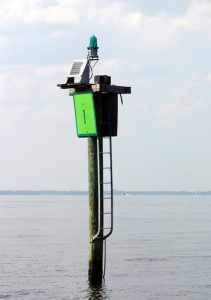Carmanah Technologies and its partner Sabik Oy recently announced that they have obtained the contract to supply solar LED marine lanterns for the Canadian Coast Guard (CCG). The one-year contract is worth over 1.2 million Canadian dollars and also includes an optional one-year extension.
According to the contract, Carmanah and Sabik shall supply the M650 solar LED marine lantern for the 1.5 and 2 nautical miles applications, the M704-5 solar LED marine lantern for three nautical miles applications and the M708 for four nautical miles applications.

“Ten years ago, Carmanah had developed the first solar LED lantern with the help of CCG. We’ve continued to work hard to develop first-rate and self-contained solar LED lanterns that meet the technical specifications and quality standards of the marine industry. The partnership between Carmanah and Sabik further shores up our position in this highly technical market and expands our ability.” Carmanah CEO Ted Lattimore said.
The solar LED marine lanterns that Carmanah & Sabik will supply have been specially tested in all kinds of marine environments. The normal work temperature of the lanterns range from minus 45 degree Fahrenheit to 125 degree Fahrenheit. The lanterns also meet military standards for immersion, shock and vibration, corrosion, solar radiation and chemical resistance.
Inside the lanterns, there is an on-board microprocessor that can control the lantern’s solar tracking system and adjust LED lighting intensity, to minimize energy consumption and meet navigational lighting intensity requirements. To ensure the necessary lighting intensity for maritime communication, the lanterns use an intelligent deployment algorithm based on Schmidt-Clausen correction algorithm.
Besides the above advanced lighting analysis, another highly technical function that the lanterns offer is wireless programming. Through an infrared remote control device the lanterns can be routinely reprogrammed to transmit different navigational messages. Carmanah lanterns can flash red, green, amber or white colors and create more than 256 different message patterns.





 CN
TW
EN
CN
TW
EN






